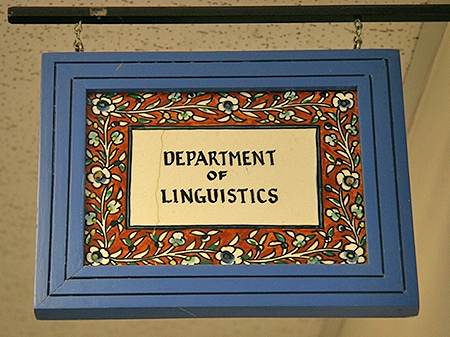
Linguistics ETDs
Publication Date
Winter 12-15-2017
Abstract
This study examines vowel formant differences between English speakers in New Mexico that self-identify as Anglo versus those that self-identify as Hispanic. Audio recordings were made of 16 New Mexicans reading short stories and carrier phases with embedded target words. F1 and F2 measurements were compared at the 50% point for monophthongs and at the 20% and 80% points for diphthongs. Mixed effects models assessed statistical significance of ethnicity, gender, and interactional effects on vowel formants and trajectory length.
All speakers showed a near-complete overlap of BOT and BOUGHT tokens, supporting a merger. Hispanic men and women patterned together to form a homogenous Hispanic group, and the Hispanic women patterned closer to the Anglo women than did the Hispanic men. The Anglo men and women did not present such a homogenous group. While Anglos shared some commonalities, namely the fronting and raising of BAN and the fronting of BOOT and BOAT, there were several cases in which the Anglo men patterned opposite to the Anglo women.
The data were then evaluated in terms of potential participation in the California Vowel Shift (CVS) (Eckert 2008) and as a Western State (as described in Labov, Ash, & Boberg 2006). Findings support New Mexican English as a Western State as well as advancing in CVS, both of which are Anglo-led shifts across the country and in New Mexico. Anglo women lead the way with advancement of CVS, Anglo men and Hispanic women follow (though in different ways), and Hispanic men do not participate except for the BOT-BOUGHT merger.
The findings from the Hispanic group were additionally compared with other studies on Chicano English from across the United States, primarily on the topics of diphthong trajectory, BAN-raising, and Hispanic participation in local Anglo-led sound changes. Findings on diphthong trajectories were inconclusive, and it remains a question for further study. The BAT-BAN split, a commonly documented characteristic in Chicano English literature, was pervasive in the New Mexican data as well. Lastly, the New Mexican Hispanics patterned similarly to other communities where Hispanic participants, primarily the women, participate in the local Anglo-led sound changes, albeit to a less advanced degree than Anglos.
Language
English
Keywords
Chicano English, New Mexico, sociophonetics, California Vowel Shift, Anglo, Hispanic
Document Type
Dissertation
Degree Name
Linguistics
Level of Degree
Doctoral
Department Name
Department of Linguistics
First Committee Member (Chair)
Caroline Smith
Second Committee Member
Chris Koops
Third Committee Member
Richard File-Muriel
Fourth Committee Member
Melissa Axelrod
Recommended Citation
Brumbaugh, Susan. "Anglo and Hispanic Vowel Variation in New Mexican English." (2017). https://digitalrepository.unm.edu/ling_etds/54
